Embed presentation
Download to read offline
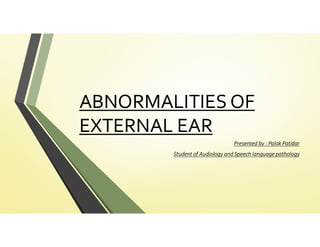






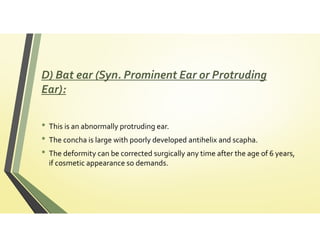






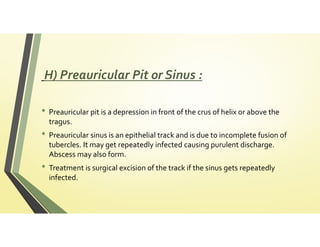
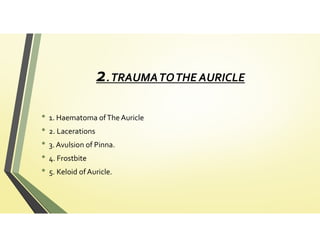





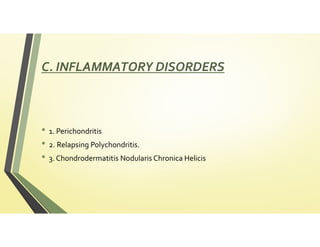




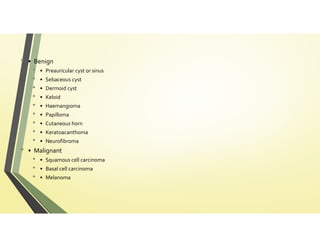

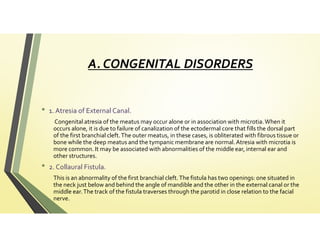







Abnormalities of the external ear can involve the pinna or auricle and the external ear canal. Congenital abnormalities of the pinna include anomalies such as microtia, cryptotia, and preauricular tags or sinuses. The pinna can also be affected by traumatic injuries, inflammatory disorders like perichondritis, and tumors. Abnormalities of the external ear canal include congenital conditions like atresia, traumatic injuries, inflammatory conditions like otitis externa, and tumors. Both areas can be involved by a variety of acquired and developmental issues that may require surgical or medical treatment.



































